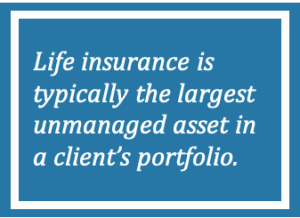See This Report on Pacific Prime
See This Report on Pacific Prime
Blog Article
The smart Trick of Pacific Prime That Nobody is Discussing
Table of ContentsThe smart Trick of Pacific Prime That Nobody is DiscussingThe Best Guide To Pacific PrimePacific Prime - The Facts9 Easy Facts About Pacific Prime ExplainedPacific Prime for Dummies

This is because the information were collected for a period of strong economic efficiency. Of the estimated 42 million people who were uninsured, just about concerning 420,000 (regarding 1 percent) were under 65 years old, the age at which most Americans become qualified for Medicare; 32 million were adults in between ages 18 and 65, around 19 percent of all grownups in this age; and 10 million were youngsters under 18 years old, regarding 13.9 percent of all youngsters (Mills, 2000).
These estimates of the variety of individuals uninsured are generated from the annual March Supplement to the Existing Populace Survey (CPS), performed by the Demographics Bureau. Unless otherwise kept in mind, national estimates of people without health and wellness insurance policy and percentages of the populace with various type of protection are based upon the CPS, one of the most widely utilized source of price quotes of insurance protection and uninsurance rates.
Get This Report on Pacific Prime

Still, the CPS is particularly helpful due to the fact that it produces annual quotes reasonably promptly, reporting the previous year's insurance policy coverage estimates each September, and because it is the basis for a consistent set of price quotes for more than two decades, permitting evaluation of patterns in protection over time. For these factors, as well as the considerable usage of the CPS in other researches of insurance coverage that exist in this record, we depend on CPS quotes, with restrictions noted.

The price quote of the number of without insurance individuals increases when a populace's insurance standing is tracked for a number of years. Over a three-year duration beginning early in 1993, 72 million people, 29 percent of the U.S. https://experiment.com/users/pacificpr1me. population, lacked protection for at the very least one month. Within a single year (1994 ), 53 million people experienced at the very least a month without insurance coverage (Bennefield, 1998a)
6 out of every 10 without insurance adults are themselves employed. Working does boost the chance that one and one's family participants will certainly have insurance policy, it is not a guarantee. Even participants of families with 2 permanent breadwinner have nearly a one-in-ten opportunity of being without insurance (9.1 percent uninsured price) (Hoffman and Pohl, 2000).
Facts About Pacific Prime Revealed
New immigrants account for a considerable proportion of people without medical insurance. One evaluation has associated a significant part of the recent growth in the dimension of the U.S. without insurance populace to immigrants that showed up in the country between 1994 and 1998 (Camarota and Edwards, 2000). Recent immigrants (those who came to the USA within the previous four years) do have a high price of being uninsured (46 percent), however they and their children represent simply 6 percent of those without insurance policy country wide (Holahan et al., 2001).
The relationship between wellness insurance and accessibility to care is well developed, as recorded later in this chapter. The connection in between health and wellness insurance policy and health and wellness results is neither straight nor straightforward, an extensive clinical and health solutions research literature links health insurance policy coverage to enhanced accessibility to care, much better top quality, and improved individual and population health and wellness condition.
Degrees of evaluation for analyzing the impacts of uninsurance. This discussion of health insurance policy protection focuses largely on the U.S. populace under Visit This Link age 65 because virtually all Americans 65 and older have Medicare or various other public insurance coverage. Furthermore, it focuses especially on those without any type of health insurance for any kind of size of time.
Pacific Prime Things To Know Before You Get This
The problems faced by the underinsured are in some areas similar to those faced by the uninsured, although they are generally much less extreme. Wellness insurance, however, is neither necessary nor enough to gain access to medical services. The independent and direct impact of health insurance policy coverage on accessibility to health services is well developed.
Others will certainly acquire the healthcare they require even without health insurance policy, by paying for it out of pocket or seeking it from suppliers that use treatment complimentary or at highly subsidized prices. For still others, health insurance alone does not guarantee receipt of care since of other nonfinancial obstacles, such as a lack of wellness care carriers in their area, restricted accessibility to transport, illiteracy, or etymological and cultural differences.
Some Known Details About Pacific Prime
Official research study concerning uninsured populations in the United States dates to the late 1920s and early 1930s when the Board on the Cost of Medical Care generated a collection of records concerning funding physician workplace gos to and hospitalizations. This concern ended up being salient as the numbers of clinically indigent climbed up during the Great Anxiety.
Report this page